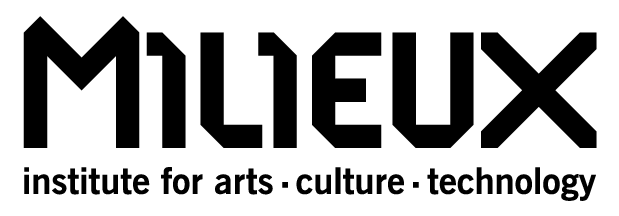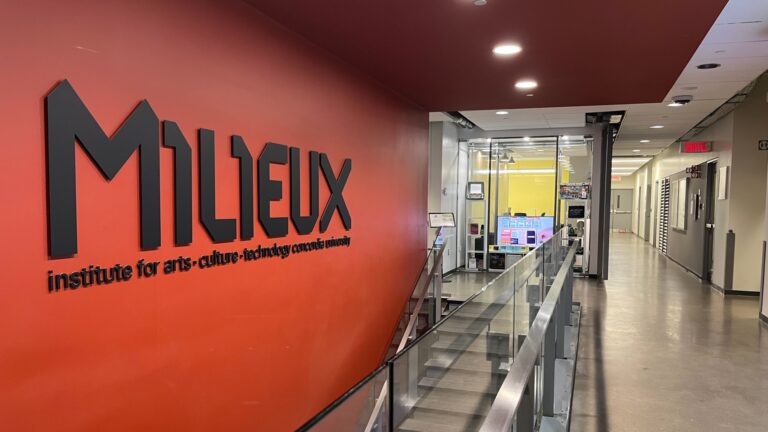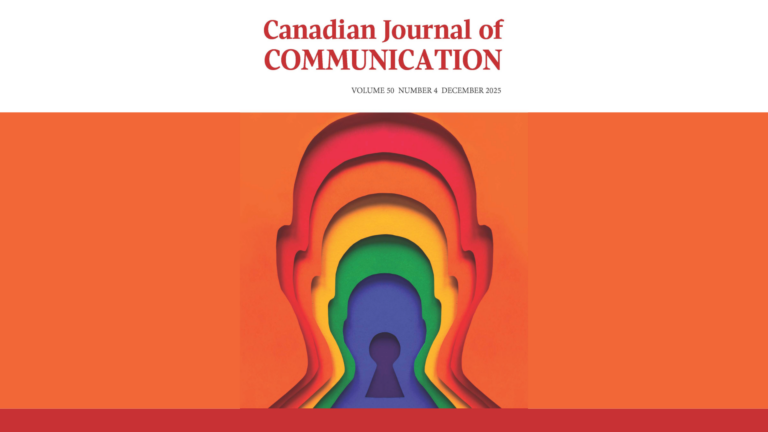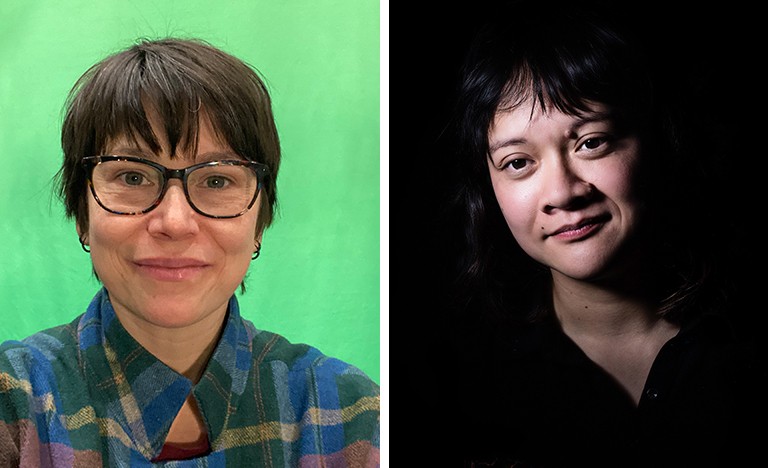This article was originally published in the Globe and Mail on April 8, 2016.
Concordia University’s new institute examines effects of digital technology
By Robert Everett-Green
In Of Montreal, Robert Everett-Green writes weekly about the people, places and events that make Montreal a distinctive cultural capital.
Contemporary art talk is saturated with the language of research. The artist’s statement, as a genre of art writing, has become heavily oriented toward identifying whatever issues the work is supposed to investigate.
Not surprisingly, some of this artful inquiry is going on in places explicitly dedicated to research. One such is the Milieux Institute for Art, Culture and Technology, which recently opened at Montreal’s Concordia University.
Milieux gathers some 260 artists, engineers, social-science types and humanities scholars into seven thematic research clusters, all touching on the effects of digital technologies on culture and creation. The aim is to spark creative dissonance through what one cluster co-director calls “a mangling of methodologies.”
Case in point: a phalanx of hanging robotic exoskeletons that have just arrived at Milieux after a year-long tour of galleries and festivals in Europe. Visitors strapped into these gizmos were compelled by the computerized machinery to move their arms in ways outside their control. It took robotic engineering to build the devices, but perhaps only artists – electronics arts professor Bill Vorn and Louis-Philippe Demers – would think of transferring control to the robots. The project was inspired by the punitive compulsions forced on the bodies of sinners in Dante’s Inferno.
In rooms occupied by Milieux’s Textiles and Materiality cluster, a dress ornamented with a badge-like device made from silver thread links smart textile design to emblems from a 14th-century embroidered belt at the British Museum. Studio arts professor Barbara Layne’s collaborators include dress designer Lauren Osmond and electrical engineer Tahseen Mustafa, who had to figure out how to make the pictorial silver badges function as antennae.
Another wired-garment project, based on illustrations from James Clerk Maxwell’s pioneering research into electromagnetism, will be shown at the next Subtle Technologies festival in Toronto in May. One goal of the projects is to develop a textile antenna strong enough to communicate via satellite.
A project in Milieux’s “speculative life lab,” which is set up for bio-tech work, takes off from a centuries-old practice of binding books in human skin, an 1880s example of which was uncovered at a Harvard library two years ago. Media artist and communication studies professor Tagny Duff grew her human binding material in the lab, staining and seeding it with viral agents to produce images of HIV on the covers. These disturbing memento mori, for which Duff and her collaborators designed a Victorian-looking cryonic cabinet, have been exhibited at galleries in Ireland and France.
The large quarters of the Post Image Research cluster houses a group project that explores ways in which landscape photography can give visible shape to displacement and memory. Another is focused on images “that create fictions from things that still have a documentary aspect,” says cluster co-director Raymonde April, who was on the longlist for this year’s Scotiabank Photography Prize. Like almost everything at Milieux, these are collaborative efforts, not the work of artists toiling alone.
All of these projects, and Milieux itself, originated with Hexagram, an international research unit that functioned at Concordia until its external funding ran out. Its equipment was transferred to Milieux, but not its internal structure, which was more insular.
“Hexagram was rather opaque, especially for students,” says Lynn Hughes, a former painting instructor who now leads Milieux’s Technoculture, Art and Games cluster. “People no longer get kingdoms of their own.”
Hexagram was also more oriented toward what Hughes calls “the innovation model,” which tends to privilege research that may lead to patentable results. Much of what is happening at Milieux has more to do with how the evolution of media and technology affects culture, and vice versa. That’s closer to the artistic practice of foregrounding little-noticed relationships between people, things and power, including technological power.
As Media History Research cluster director Darren Wershler points out, that approach has a critical social edge that you don’t find in straightforward technical innovation. His group is researching topics such as the history of speed-reading and early word processors, which were both tools for dealing with engineered explosions of text generation and consumption.
Researchers at Milieux’s Indigenous Futures cluster have been teaching indigenous students on reserves how to “re-skin” popular video games with stories from their own cultures – an intriguing challenge, given the invade-and-conquer theme of many games. Hughes’s game designs aim to subvert the usual absorption in external virtual worlds by generating an interactive game choreography that the players do with their own bodies.
Some innovation-oriented research centres, such as MIT’s Media Lab, give the impression that the artists there are mostly along for the ride. Milieux could be different. The artists seem to be there in part because artistic ways of thinking can help produce knowledge that might not be attainable any other way. Researchers who think like artists may be more able to reach outside the intellectual silos that arise wherever specialized study is done.
“We have people here who may not call themselves artists, but who are interested in creative practice,” says Duff. And perhaps the artists will gain a different model for working. They may become more collaborative, and less tied up with the romantic ideal of the artist who works alone, and who extracts from his or her solitary head the sometimes parched summary one reads in artists’ statements.



